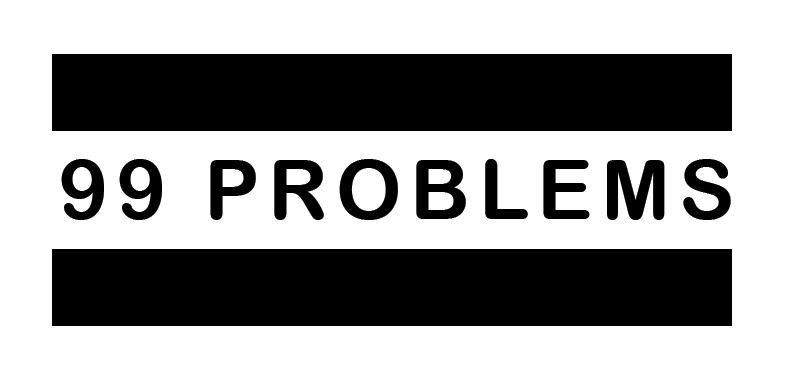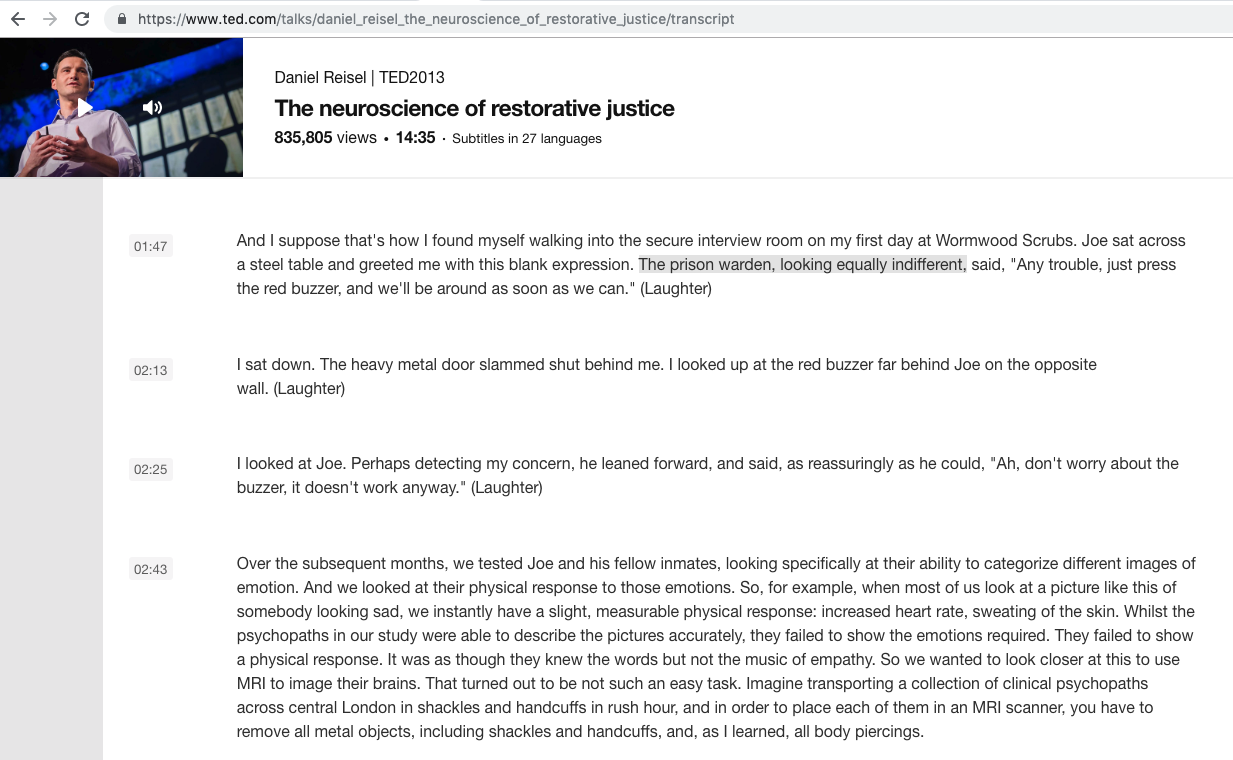Select
Welcome back to the 99 Problems series! This series focuses on the problems of current generation streaming platforms that are solved by Aviary, AVP’s next-generation platform for streaming audio and video content. (Did that sentence make you roll your eyes? Start here). Otherwise, if you are ready to get back to it, let’s go!
In the last blog post in this series I talked about the Lack of Democratization Problem which boils down to the fact that the feature set encompassed in Aviary was only available to those with sufficient resources and technical support. This meant that while many wanted to publish their audio and video content with a similar feature set that they couldn’t. Aviary solves that problem for the publisher of content by bringing the full suite of features (and more!) at an extremely affordable cost with little-to-no-need for technical support.
This post focuses on a related problem but from the perspective of the content and the consumer of information as opposed to the publisher. I am calling this problem the Closed Loop Problem.
As I have before, let me set the stage with an example of standard user-behavior and user-expectations from consumers of text-based information. Full text search is the most standard of user expectations today. Users do not only expect to be able to perform full text search only on certain content types or only with certain applications. People do not think twice before subconsciously clicking ctrl/cmd-f and taking off to navigate through a Word Document or Google Doc, PDF, web page, Slack workspace, spreadsheet, e-book, email, Powerpoint or Google Slides, Twitter, Facebook, and on and on and on. We do not expect to only be able to search through newspaper content, or books written by certain authors. We expect full text functionality in a universal way across all text-based content.
With audio and video it is quite a different story. Ted Talks requires consumers to go to the TedTalks website and use their website to be able to search through transcripts of TedTalks. audiosear.ch, a now seemingly defunct project, was focused only on podcasts and required you to go to their own search engine to search through the full text of podcasts. Rutherford Living History requires you to go to their website and only contains content that falls within the scope of their work.

Welcome back to the 99 Problems series! This series focuses on the problems of current generation streaming platforms that are solved by Aviary, AVP’s next-generation platform for streaming audio and video content. (Did that sentence make you roll your eyes? Start here). Otherwise, if you are ready to get back to it, let’s go!
Haven’t We Seen These Features Before?
People may look at Aviary and think that they have seen something like it before, raising the question of why this set of features deserves the label of “next-generation”. After all, TED Talks has searchable transcripts that are synchronized. WNYC public radio out of New York City had “audio search”, which uses searchable synchronized transcripts, for years. The American Archive of Public Broadcasting has a website that has searchable synchronized transcripts. The OHMS viewer* does a very similar thing as well. In fact, if you thought really hard about it you could probably come up with a dozen or so applications and websites that have used searchable synchronized transcripts. So, how in the world is Aviary “next-generation”?


TED Talks synchronized transcript feature American Archive synchronized transcript feature
First off, I’ll say that Aviary is a whole lot more than searchable synchronized transcripts, but that’s not the argument I’d like to focus on in this post. In this post I would like to focus on the fact that in each of the examples above there is either no point of entry for others, or as a best case, there is a high point of entry. For instance, TED Talks functionality is awesome…. for TED Talks and users of the TED Talks website. I’m sure there are lots of organizations that would love to use the same platform for their own content, but that’s not possible. The same is true for the American Archive for Public Broadcasting website. The similar features found on these websites are not packaged and available for other organizations or collections to use.
“Aha!” you say, “but what about the free and open source OHMS Viewer? That is available to anyone that wants to use it”. Yes, you are correct. However, there is a barrier to entry that proves challenging for many organizations, which is the setup and hosting of the OHMS Viewer. This requires access to affordable, available, and knowledgable IT folks to setup and then it requires ongoing resources for running and maintaining the server and application, not to speak of customization needs. For some, this is not a high barrier for entry. For many, it is.
In one way or another, every platform that you can think of with a similar set of features is either not available to the public at all, or requires heavy lifting in the way of technical resources and price tag.
Flippin’ the Script
So, while Aviary deserves the “next-generation” label for the full suite of innovative features it brings to the table, for the purpose of this post, it is the fact that Aviary brings these features to anyone and everyone in a simple user interface and at an extremely low cost that makes it “next-generation.” Aviary is purposely crafted to make it available to everyone, including small historical societies, community-based organizations, small not-for-profits, and small counties. In this case, Aviary is not “next-generation” because of what it does. It is “next-generation” because of what it does AND who has access to it. Follow our How-To series to see just how simple it is.
Problem # 2: Lack of Democratization. Status: Solved.

Want to see for yourself? Find out more about Aviary at weareavp.com/products/aviary or try Aviary for yourself at aviaryplatform.com.
Stay tuned for the next blog in which I’ll discuss a closely related problem, but one that focuses more on the content in the platform rather than the people using the platform: the Closed Loop Problem.
[Read more]
How to Customize Your Organization Profile and Theme
[Read more]

Welcome to AVP’s very first post in our 99 Problems series! This series focuses on the problems of current generation streaming platforms that are solved by Aviary, AVP’s next-generation platform for streaming audio and video content. (Did that sentence make you roll your eyes? Start here). Otherwise, if you are ready to dive in, let’s go!
The Production and Consumption of Text as Information
The point of this post will be to focus in on audiovisual content, but before we get to that, let’s talk about text because it serves as a useful reference point for comparing and contrasting. Since ancient times people have written things down and consumed written information under two primary paradigms:
- Entertainment-oriented: Writing as a form of expression and consumption of entertainment.
- Information-oriented: Writing as a form of documentation and consumption of information.
It is not to say that there can’t be some overlap between the two, either on the production or consumption side, but for the purpose of this conversation let’s use these two terms to speak broadly about these two paradigms. Let’s also focus on the consumption side of things and refer to these as an entertainment-oriented experience and an information-oriented experience. In other words, let’s look at this from the perspective of the consumer of content and what their intended experience is – to be entertained or to gather information.
Without getting into an arcane history of text or search, let’s look at a crude listing of some salient facts in rough chronological order:
- Humans made marks on all manner of objects and materials
- Text was written by hand on paper
- Text was typed on paper
- Text was typed and saved as digital information
- Full-text search emerged that allowed people to retrieve the exact words they wanted to find within a digital document
- Full-text search evolved, allowing people to find the exact words they wanted across a boundless number of repositories of text in all different formats
The emergence of full-text search transformed the consumption of text, and most significantly impacted the information-oriented experience.
In the entertainment-oriented experience we are consuming every word for the purpose of enjoyment. Search and navigation of this same text may become useful when we are performing certain tasks, but this use of the text would fall under an information-oriented experience. For instance, when we are at the library or online trying to find the next book we’re going to read, or we are looking for a specific piece of text to share with someone else, or there is scholarly work taking place.
Today it’s hard to imagine a time when we were not able to hit Command/Ctrl-F within a PDF or Word doc, or search instantly across documents on your computer or server, or Google things. Seriously, try for a minute to imagine what your life would be like without this functionality. This is a deeply ingrained user expectation today for text in all file formats and forms, regardless of whether it’s a book or a newspaper or a report or a website or meeting minutes or… you get the picture. EVERYTHING. We do not give an inkling of thought to the miracle of being able to search in a comprehensive and limitless way with little effort all day long, every day of our lives.
The Production and Consumption of AV as Information
Now, without getting into an arcane history of AV or search, let’s look at a crude listing of some salient facts in rough chronological order:
- AV was recorded on analog media of various sorts with increasing sophistication and quality over time
- AV was recorded and saved as digital information on physical digital media (e.g., CD, DVD, DAT, Digital Betacam)
- AV was recorded and saved as digital files on hard drives (e.g., .avi, .wav, .mov, .mp3)
- The internet allowed people to consume AV online with incremental levels of increasing sophistication in search and organization based on a small amount of metadata (e.g., title, director, producer, actor, date published, genre)
AV still exists in a pre-full-text world. Why is that? For as long as AV has been produced and consumed, it has been done for both entertainment and information reasons. The information-oriented experience with AV is equally as valid as the information-oriented experience with text. AV is news, lectures, presentations, meetings, the study of music, and… you get the picture. EVERYTHING. It is not just movies, television, commercial music, and other forms of entertainment. There are many billions of hours of recorded AV and a vast majority of it is not entertainment. In the same way that people have a need to search across their computers and servers and the web, across all file formats and all types of text, people have the need to search for AV.
However, every current-generation, widely available streaming platform* in existence gives users about 5-10 paltry fields of metadata on which we can search. The most common user experience when using AV in an information-oriented experience is not a quick Command/Ctrl-F that takes you right to the point of interest. It is clumsily jumping and skipping around the timeline of an audio or video recording hoping that you get lucky and find the right spot and that you aren’t missing something important. Or spending inordinate amounts of time listening/watching in faster-than-real-time to many hours. And forget the idea of even searching across millions of hours, across multiple types, file formats, and sources**. That’s not even a thought.
[Read more]
Welcome to AVP’s very first post in the series, How To Aviary! This series of quick insights and videos will introduce you to the basics of Aviary, AVP’s next-generation platform for streaming audio and video content. (Did that sentence make you roll your eyes? Start here). Otherwise, if you are ready to dive right in, let’s begin with what it means to subscribe to Aviary.
[Read more]

[Read more]
AVP is pleased to announce our participation in the RIPDASA Project. The Ibero American Network for Digital Preservation of Audio and Audiovisual Archives (RIPDASA, by its Spanish acronym) is a four-year project supported by the Ibero American Program of Science and Technology for Development (CYTED, by its Spanish acronym). RIPDASA aims to support and develop research and training on digital preservation in the region.
[Read more]
These are recordings of the AVP webinar series in Spanish given on the topic of Digital Preservation. Read more here.
This report documents the outcomes of a workshop funded by the Andrew W. Mellon Foundation and hosted by Indiana University as part of a planning project for design and development of an audiovisual metadata platform (AMP). The platform will perform mass description of audiovisual content utilizing automated mechanisms linked together with human labor in a recursive and reflexive workflow to generate and manage metadata at scale for libraries and archives. The partners leading this planning project were the Indiana University (IU) Libraries, University of Texas at Austin (UT) School of Information, and AVP.
Authors: Dunn, Jon W.; Hardesty, Juliet L.; Clement, Tanya; Lacinak, Chris; Rudersdorf, Amy
Download the report (PDF)
If you have audiovisual assets in your collections, chances are you’ve heard the news: all your AV will self-combust by 2028.
[Read more]
« Previous Page — Next Page »




